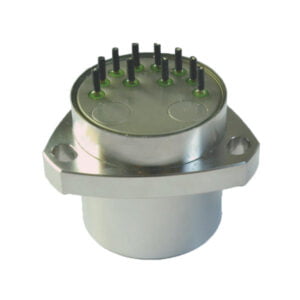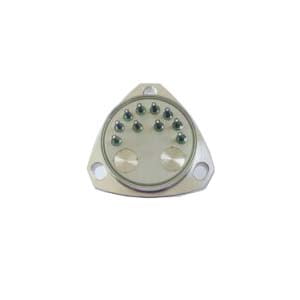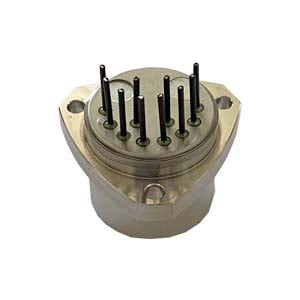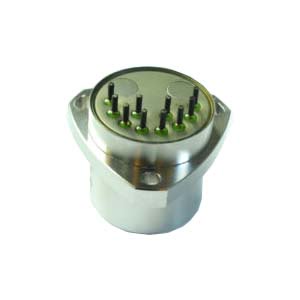An accelerometer is an instrument used to measure acceleration, commonly used in physics, engineering, and other related fields. In the design and selection of acceleration timing, we need to consider the main specifications are: measurement range, sensitivity. The sensitivity of acceleration sensor is one of the most basic indicators of sensor. The sensitivity of the sensor directly affects the measurement of vibration signal. The measurement range of the acceleration value sensor refers to the maximum measurement value that the sensor can measure within a certain nonlinear error range. The nonlinear error of the universal piezoelectric acceleration sensor is mostly 1%. As a general principle, the higher the sensitivity, the smaller the measurement range, and the smaller the sensitivity, the larger the measurement range.
Accelerometer measuring range
The acceleration level supported by the sensor output signal specification is usually expressed in ± g. This is the maximum acceleration that the device can measure and accurately represent by its output. For example, the output of a ± 3g accelerometer is linearly related to accelerations up to ± 3g. If accelerated to 4g, the output may be invalid. Note that the limit value is specified by the absolute maximum acceleration, not by the measurement range. 4g acceleration will not invalidate the ± 3g accelerometer. The ER-QA-03D is an accelerometer specifically designed for applications in the oil and gas field, with zero bias stability of 50μg, maximum operating temperature of 180 ° C and impact resistance of 500-1000g 0.5ms compared to the high temperature operating environment in the field.
Accelerometer sensitivity
The ratio of changes in acceleration (input) to changes in output signal. It defines an ideal straight line relationship between acceleration and output (the gray line in Figure 1). The sensitivity is specified by a specific power supply voltage. For analog output accelerometers, the unit is usually mV / g; for digital accelerometers, the unit is usually LSB / g or mg / LSB. It is usually expressed as a range (minimum, typical, maximum), or as a typical value plus a percentage deviation (%). For analog output sensors, the sensitivity is proportional to the supply voltage. For example, doubling the power source doubles the sensitivity.
The change in sensitivity due to temperature is generally expressed as a percentage (%) change per ° C. Temperature effects are caused by a combination of mechanical stress and the temperature coefficient of the circuit.
Accelerometer sensitivity calibration method
The calibration method of the sensitivity of the acceleration sensor is usually verified by comparison method. The ratio between the output of the vibration of the calibrated sensor at a specific frequency (usually 159Hz or 80Hz) and the acceleration value read by the standard sensor is the sensor sensitivity. The sensitivity to the impact sensor is obtained by measuring the output response of the calibrated sensor to a series of different impact acceleration values, and the corresponding relationship between the input impact acceleration value of the sensor and the electrical output within its measurement range is obtained through numerical calculation, and the slope of this line is the impact sensitivity of the sensor.
Application of accelerometer
Use in the design of seismometers
Seismometer is a special sensor used for geological exploration and engineering survey. It is a sensor that converts ground vibrations into electrical signals. It can convert ground vibrations caused by seismic waves into electrical signals, which are converted into binary data by analog/digital converters. To organize, store and compute data. An accelerometer sensor is an electronic device that can measure acceleration, commonly used in mobile phones, laptops, pedometers, and motion detection.
Automobile safety
Accelerometer sensors are mainly used in safety performance aspects such as automotive airbags, anti-lock braking systems and traction control systems. In safety applications, the fast response of accelerometers is very important. It is possible to quickly determine when the airbag is deployed, so the accelerometer must respond immediately. By adopting a sensor design that can quickly reach a steady state rather than vibration, the response time of the device can be reduced. Piezoresistive accelerometer sensors are growing the fastest due to their wide application in the automotive industry.
If you want to get more details about Accelerometer,pls visit https://www.ericcointernational.com/accelerometer/
More Technical Questions
1.How to Improve the Impact Resistance of Quartz Accelerometer
2.Temperature Error Analysis of Quartz Accelerometer
3.What is the Quartz Accelerometer Digital Closed Loop Servo Circuit?
4.Calibration Method of Accelerometer
5.How to Improve the Long-term Stability of the Quartz Accelerometer?
6.What is the Effect of Temperature Coefficient on Quartz Accelerometer?
Products in Article






